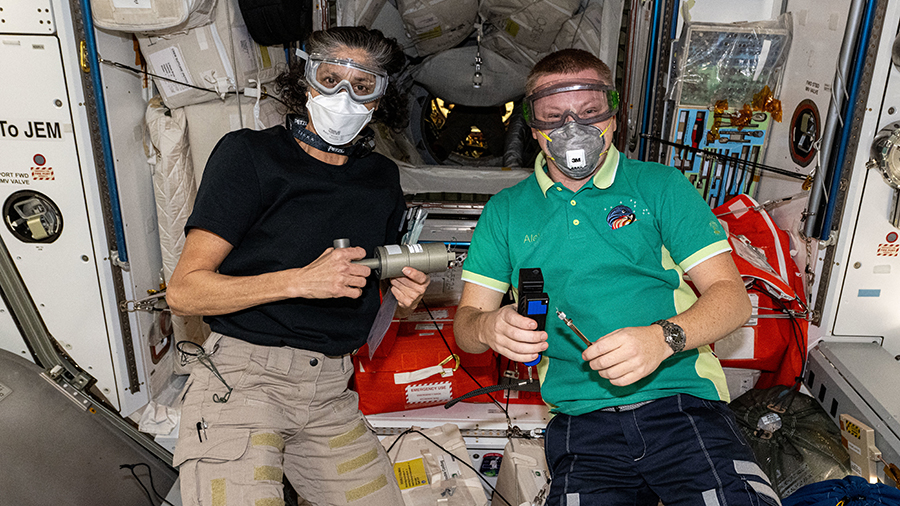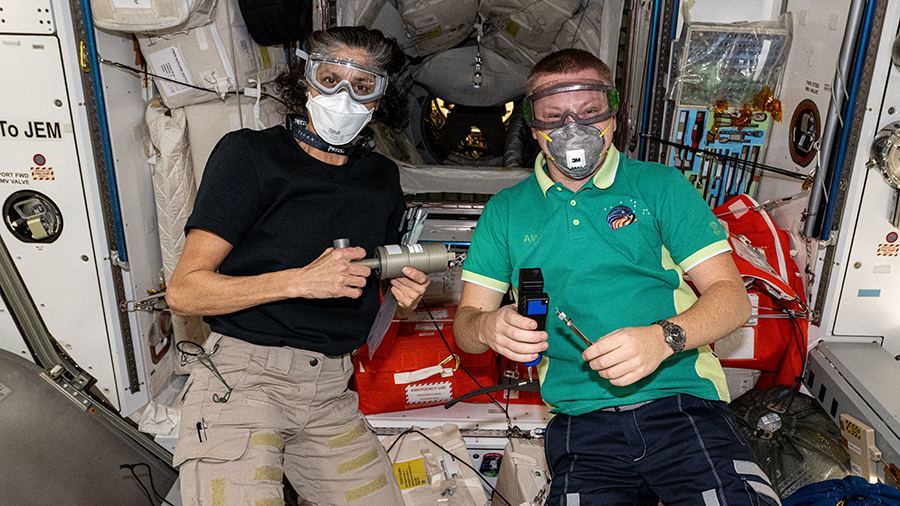
Keeping astronauts healthy on long term space missions is a key research topic this week aboard the International Space Station. Back on the ground, a cargo craft is counting down to its launch to resupply the Expedition 72 crew.
NASA Flight Engineers Don Pettit and Nick Hague worked together all day Wednesday exploring how living in space affects inflammation, or how the body responds to injury or infection. The duo worked in the Kibo laboratory module servicing biological samples and observing space-caused inflammatory changes using specialized imaging gear. Insights from the biology study may help researchers prevent space-caused immune system dysfunction and protect astronaut health.
Station Commander Suni Williams and Flight Engineer Butch Wilmore, both from NASA, worked on a similar study exploring how spaceflight affects the immune system and blood clotting. The astronauts processed bone marrow cell samples and platelet samples, tiny blood cells that form clots to stop bleeding, in Kibo’s Life Science Glovebox. The Megakaryocyte Flying-One experiment seeks to understand how the cells respond to weightlessness and preserve their functionality protecting crew health during space missions.
Both astronauts also worked inside the SpaceX Dragon cargo spacecraft and unpacked a spacesuit for stowage inside the orbital outpost’s Quest airlock where spacewalks are staged. The duo then loaded another spacesuit inside Dragon for return to Earth and maintenance.
Roscosmos Flight Engineers Alexey Ovchinin and Ivan Vagner took turns on Wednesday wearing a sensor attached to their trachea recording their exhalation rate. The cosmonaut duo was studying how the lack of gravity impacts breathing during a forced expiration maneuver. Afterward, Ovchinin studied 3D printing tools aboard the space station. Vagner partnered with Flight Engineer Aleksandr Gorbunov replacing parts and checking for leaks on Roscosmos’ lower body negative pressure suit. The specialized suit is being tested for its ability to counteract the space-caused pooling of fluids in a crew member’s upper body and protect vision and alleviate the effects of returning to Earth’s gravity.
Nearly three tons of food, fuel, and supplies destined for the Expedition 72 crew are packed inside the Progress 90 spacecraft counting down to a lift off at 7:22 a.m. EST (5:22 p.m. Baikonur time) on Thursday from the Baikonur Cosmodrome in Kazakhstan. The Progress 90 will orbit Earth for two days before beginning its automated approach and rendezvous sequence with the orbiting lab before docking to the Poisk module at 9:36 a.m. on Saturday. The Progress 90 replaces the Progress 88 resupply ship which vacated Poisk’s docking port on Tuesday completing a six-month cargo mission.
Learn more about station activities by following the space station blog, @space_station and @ISS_Research on X, as well as the ISS Facebook and ISS Instagram accounts.
Get the latest from NASA delivered every week. Subscribe here: www.nasa.gov/subscribe

